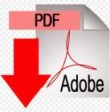European Journal of Musculoskeletal Diseases 2016; 5(2)Jul-Dec: 29-33
REVIEW
BRUXISM: DIAGNOSIS AND TREATMENT, A NARRATIVE REVIEW
C. Lorenzi1 and A.M. Pujia2
1Department of Chemical Science and Technologies, University of Rome “Tor Vergata”, Rome, Italy
2Department of Clinical Sciences and Translational Medicine, University of Rome “Tor Vergata”, Rome, Italy
Correspondence to:
Claudia Lorenzi, DDS
Department of Chemical Science and Technologies,
University of Rome “Tor Vergata”,
Rome, Italy
e-mail: lorenzicla@libero.it
ABSTRACT
Bruxism is a parafunctional activity which involves the clenching and grinding of teeth. It can cause harmful effects on the health of the temporomandibular joint, masticatory muscles, dental elements and facial pain. The dentist is the specialist to whom patients are referred for bruxism. Therefore, it is crucial for the clinician to carry out a correct diagnosis and set up a correct treatment plan if necessary. This study aims to describe current diagnostic methods and treatment of
this parafunction.
KEYWORDS: bruxism, muscle, pain, awake bruxism, asleep bruxism



